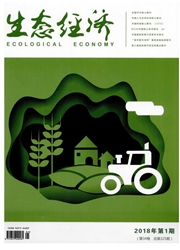

 中文摘要:
中文摘要:
近年来博物馆旅游作为独特的专项旅游产品深受广大旅游者的喜爱,我国博物馆数量较多,节能减排任务迫在眉睫。文章首先界定了博物馆、旅游碳足迹的相关概念,然后选取三座建筑规模与年客流量不同的博物馆,从直接、间接与完全三方面构建博物馆旅游能耗与碳足迹估算模型,估算得出,2012Ab我国每座博物馆旅游能耗与碳足迹均值分别为52.26TJ与8771.62t,所有博物馆旅游完全能耗与完全碳足迹分别为187569.54TJ与3148.14×104t,直接能耗与间接能耗的比例分别为48.73%与51.27%,直接碳足迹与间接碳足迹的平均比例分别为64.43%与35.57%。最后基于生命周期理论,从规划建设、运营管理与废弃处理三个阶段构建博物馆低碳发展模式。
 英文摘要:
英文摘要:
Museum tourism served as a typical special tourism product is welcomed by tourists in recent years. It is an urgent task to conserve energy and reduce carbon emission in museum tourism for the large number of museums in China. First of all, this study defines the relevaiat concepts and constructs an estimation model in direct, indirect and complete ways. Thus three typical museums, which are representative in small, medium, and large size according to their architectural scales and passenger volumes, were selected as samples. On the, basis of the preliminary estimates, the average tourism energy consumption and carbon footprint of every museum in our country respectiveIy are 51.76 TJ and 8660.29 t; the complete tourism energy consumption and complete carbon footprint (both in annual average) are 185 769.06 TJ and 31 081 800 t; the ratio of direct and indirect energy consumption (both in annual average) are 63.98% and 36.02%. Finally, according to the life cycle theory, the writer builds low-carbon development mode of museum in three different periods, i.e. planning and construction period, operation and management period as well as waste disposal period.
 同期刊论文项目
同期刊论文项目
 同项目期刊论文
同项目期刊论文
 期刊信息
期刊信息
